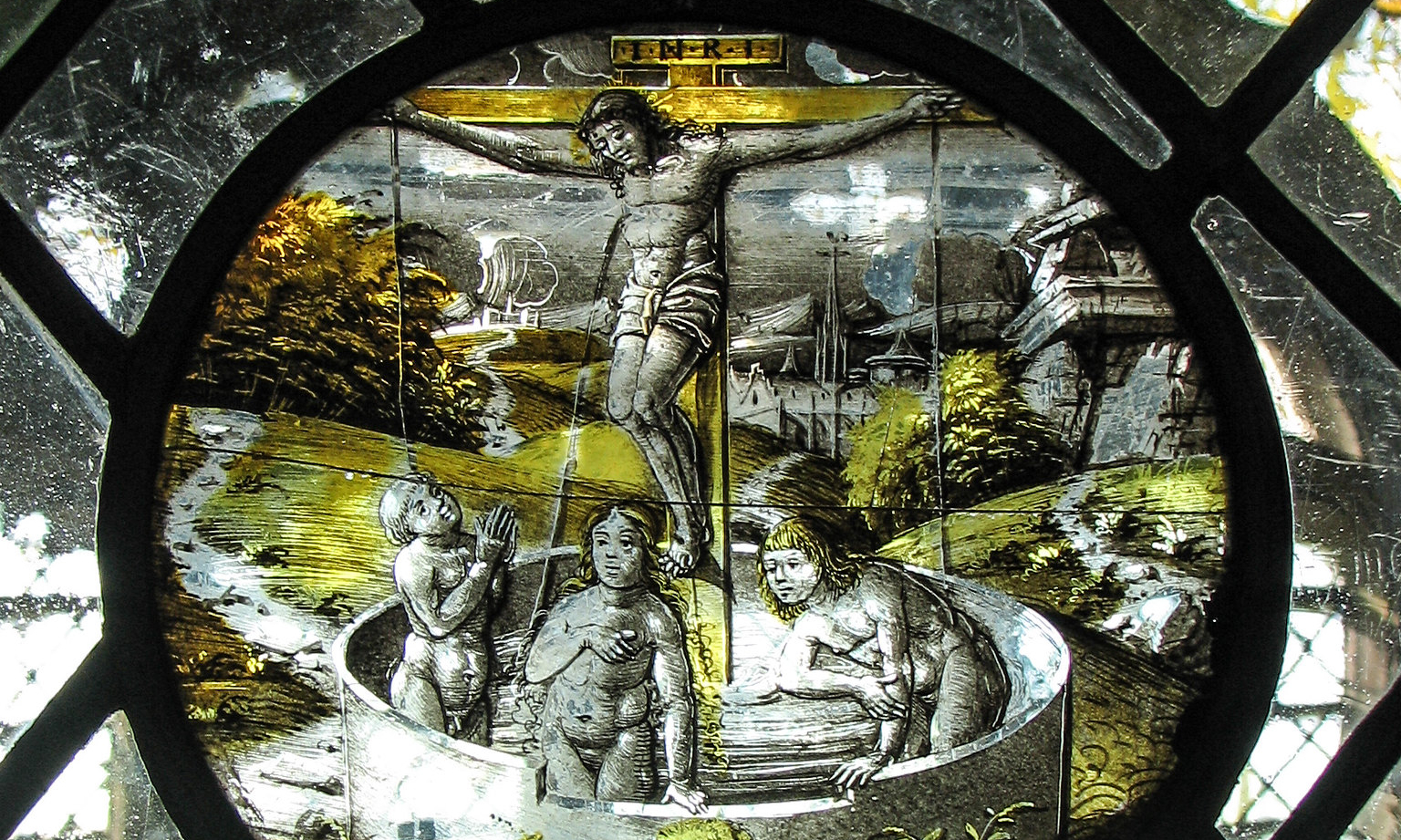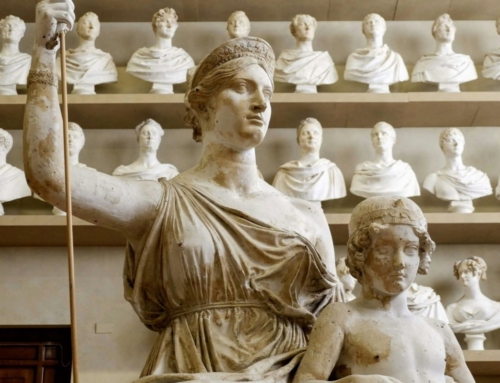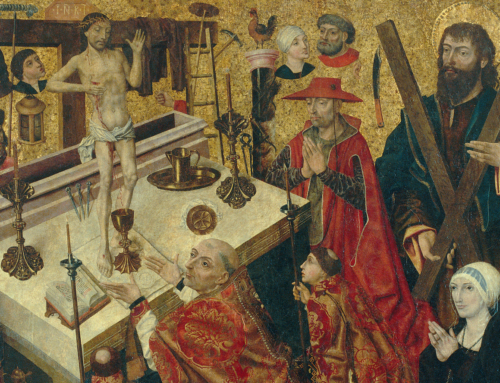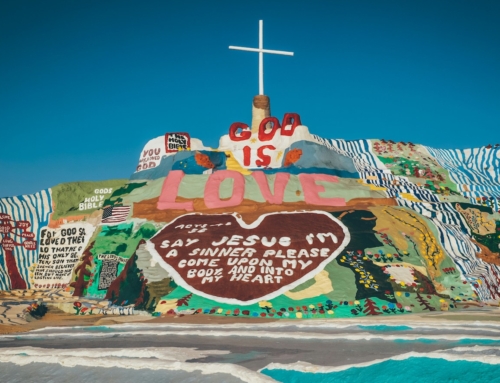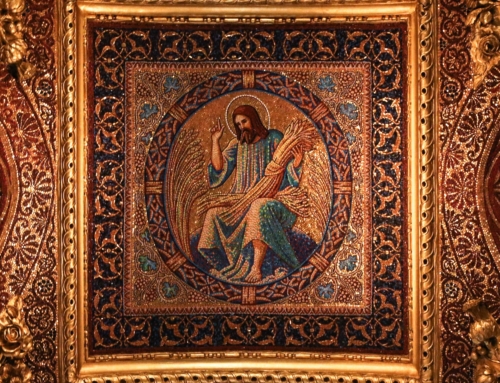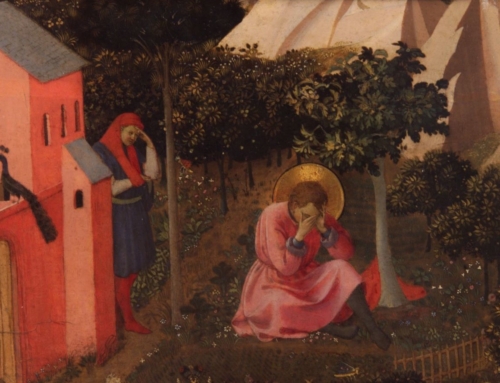Scripture is full of recurring images and themes. God uses the physical—bread and wine, light and darkness, water and blood—to reveal the spiritual. Consider water. Water flows through the pages of Scripture, making many different appearances. Like a theme in a symphony, one mention of water recalls its earlier appearances, yet each recurrence adds something new. Water’s symbolic meaning grows throughout sacred history, beginning with water’s natural properties. God then uses these properties to reveal himself and ultimately gives it a role in our salvation.
Water gives life. In Eden, a spring welled up and watered the whole garden, vivifying every tree with good fruit. When the Lord led the Israelites out of Egypt, he saved them from death by water. The Egyptian army had pursued them to the sea and cornered them, but God opened up the sea for them. By water, God saved them from the army, and they lived.
Water quenches thirst. As they traveled through the desert, the Israelites thirsted and cried out for water. At Meribah, a stop at the base of Mount Sinai, God assuaged their thirst by instructing Moses to strike a rock so that water would pour forth from the rock. There, the Lord also quenched a greater thirst. He gave Moses the law. The law gave the people a means to live in a deeper relationship with God. It nourished the people in a more fundamental way than physical water.
Water purifies. In the Law, water comes to the fore in rites of washing. Since no one should treat God as one treats worldly things, these purificatory rites gave the people a way to prepare to worship God in the Temple. Washing away the world’s impurities with water, they could appear clean before God.
When the prophets turned their eyes to the messianic restoration of Israel, they remembered these properties of water. During the exile of the Israelites to Babylon, Ezekiel proclaimed that the Lord would save them through a purification: “I will sprinkle clean water upon you to make you clean” (Ezek 36:35). In a separate vision, Ezekiel saw a new Temple whence water flowed to the dry land below. This water brought about a new paradise. Recalling the water of Eden, the water from the side of the Temple gave life to trees bearing copious amounts of fruit (Ezek 47:1-12).
Later, Isaiah urged the exiles to return to Israel from Babylon. He spoke of the return as a new exodus and a renewed covenant and told the people to seek the Lord with an invitation to quench their thirst, “all you who are thirsty, come to the water!” (Isa 55:1).
These streams of water—water giving life, water quenching thirst, and water purifying—meet in Jesus. His words and deeds regarding water draw from the deep well of Scripture. He who imitated Isaiah’s words by proclaiming, “if any one thirst, let him come to me, and let he who believes in me drink” (John 7:37-38), was stuck like the rock at Meribah in the crucifixion: “One soldier thrust his lance into [Jesus’s] side, and immediately blood and water flowed out” (John 19:34). From the side of the new Temple, Jesus, flows the life-giving water about which Ezekiel prophesied.
In this water, the tradition of the Church sees the Sacrament of Baptism, which gets its saving power from Jesus’ sacrifice. Baptism takes the place of ritual ablutions by giving us a definitive purification from the stain of original sin. Baptism leads us on an exodus through the waters of the Red Sea and orients us towards a new paradise. Baptism gives us the indwelling of the Trinity and the new law of grace, quenching the deepest thirst of our souls.
When we behold the earth clothed in green plants, feel the satisfaction of drinking on a hot day, or see the dirty being washed clean, we perceive the effects of water. Such experiences can remind us of God’s deeds, bringing us to give him thanks and to pray that many others may share in the wonderful gift of baptism.
✠
Image: by Fr. Lawrence Lew, OP (used with permission)

